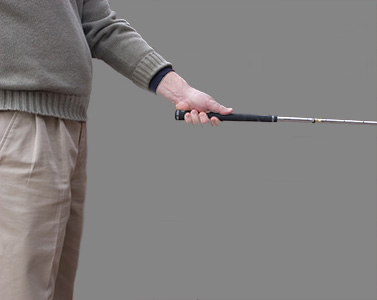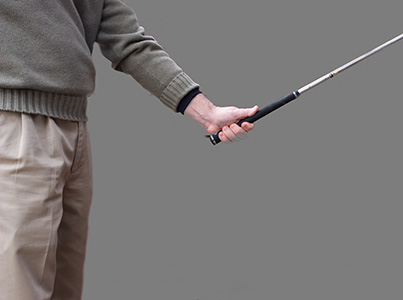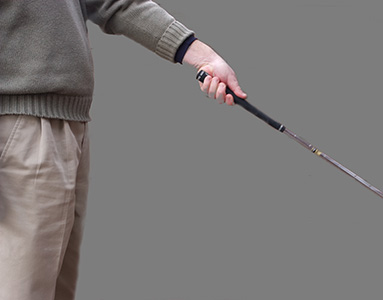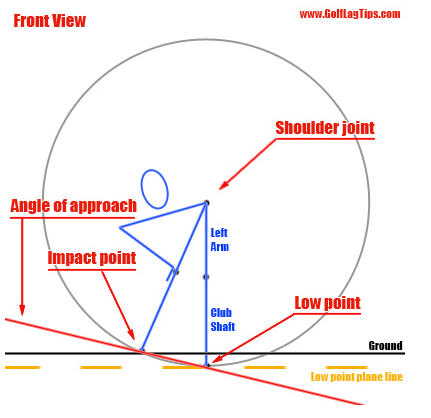If you notice in the video, I am demonstrating that the other change I made was that I am standing further away from the ball.
I actually pieced this idea together from a few people. One place was from continuing to study Mike Maves' (aka Sevam1) swing. Take a look at Mike at P1

As you can see, Maves has his arms noticeably away from the ball, however it doesn't look like he's reaching either. And I recall Monte Scheinblum say to the effect that taller golfers should stand further away because they need to create 'space' for their longer arms. And I believe Nick Faldo, a golfer whose swing I was always interested in for the fact that he and I are about the same height, once said that shorter golfers should stand up more at address to 'get taller' and tall golfers should bend over more to 'get smaller.' And there's the constant advice of John Erickson that golfers should swing flatter and clubs today are too upright.
There was also the advice of David Orr that downward neck tilt was from the head being tilted upward with the eyes looking down at address. You're basically best off having your eyeballs looking in the same direction your face is pointing with *all* clubs in the bag. You don't want to have your eye looking downward or your eyes looking upward. I actually posted an article on neck tilt awhile ago and you can find it HERE.
For awhile I had felt that wasn't causing the downward neck tilt because I didn't feel like I was looking downward and didn't raise my head up. However, by taking all of these things into consideration, I started to realize the distance I was standing away from the golf ball was effecting my golf swing.
If you stand too close to the ball, you almost inevitably will have to look down with your eyes to see the ball.
I also got the feeling I was standing too close to the ball when I looked at myself at address compared to Rory McIlroy at address from this unique camera angle.


Different amount of knee flex, waist bend, left shoulder in relation to the head, etc.
So what I believe happens, in this case, is you stand too close to the ball and the neck is almost forced to tilt. The swing also becomes more upright and you don't have the right amound of knee flex and waist bend. I think these things help cause a too upright of a downswing and get the clubface closed on the downswing. Here's a look at a couple of pics of the downswing.


Much squarer clubface and IMO, noticeably less downward neck tilt.
The other change in the swing I made came from Dana Dahlquist's forum and it's what helped me keep some knee flex and it's called 'cocking the ankles.'
According to a poster at the forum who goes by the handle 'Darom55' he says that both ankles should be cocked basically thru impact.
What does that mean? Well, take a look at these pics from Jeff Mann's Web Site showing what a 'level', 'cocked' and 'uncocked' wrist looks like.
LEVEL WRIST

COCKED WRIST

UNCOCKED WRIST

As Mann describes on his site, the 'cocked' wrist basically has the left thumb moving closer to the forearm. The uncocked wrist has the thumb moving away from the forearm.
So my interpretation of 'ankle cocking' is to make the ankle such a way where the top of the foot moves closer to the shin. And then from there I try to maintain that as long as I can. This thought helped me keep some flex in my knee a little better than thinking about keeping the right knee flexed.
As far how far to stand away from the ball I would suggest to look at your head. If the back and the head move up quite a bit on the backswing, then you may be standing too close to the ball. And of course, if your neck tilts downward, then you also may be standing too close to the ball.
3JACK




































